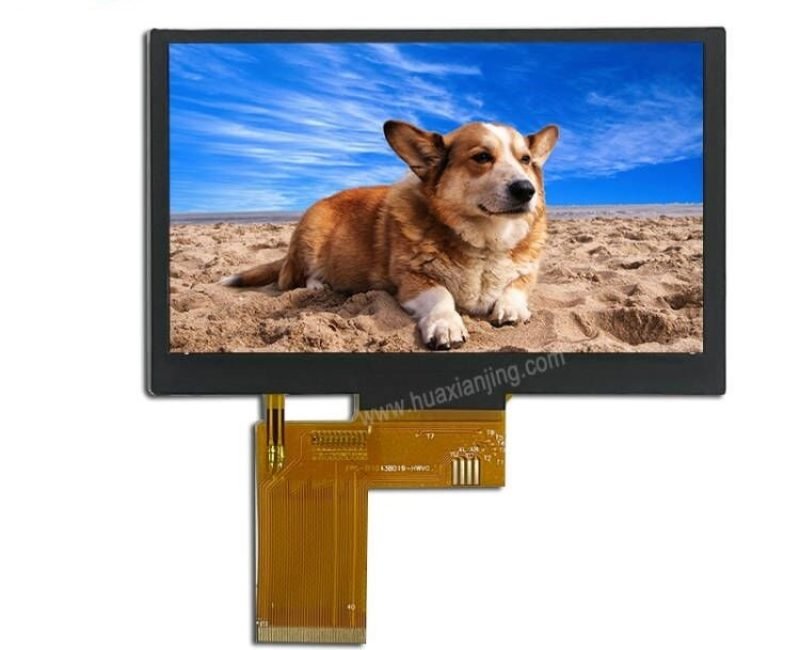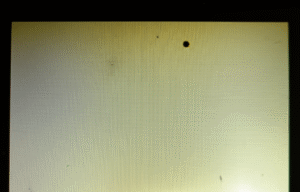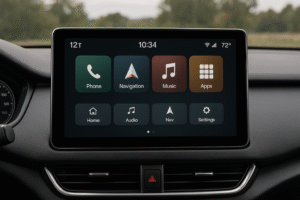
Crosstalk in LCDs occurs when signals interfere between adjacent pixels, leading to ghosting or blurring. Passive matrix LCDs have high crosstalk due to their shared grid structure, which lacks pixel isolation. Active matrix LCDs use thin-film transistors to control each pixel, reducing signal bleed for clearer visuals. This difference makes active matrix displays(Differences Between Segment LCD and Dot Matrix LCD) ideal for high-resolution applications like smartphones. The following sections explore crosstalk mechanisms, technical drivers, and mitigation techniques to help you choose the right LCD module for your needs.
What Is Crosstalk in LCDs and How Does It Affect Display Quality?
Crosstalk in LCDs occurs when signals interfere between adjacent pixels, causing visual distortions like ghosting or blurring. This interference degrades image quality, especially in dynamic or high-resolution content.
Crosstalk in LCDs arises from electrical signal interference within the active matrix addressing system, impacting pixel accuracy. This issue is prominent in small and medium size LCDs used in devices requiring sharp visuals, where crosstalk can compromise user experience.
- Mechanism of Crosstalk: In an active matrix LCD, each pixel is controlled by a thin-film transistor (TFT) in the LCD matrix. Crosstalk occurs when signals meant for one pixel affect neighboring pixels due to electrical leakage or insufficient insulation, leading to visual artifacts.
- Impact on Applications: In IPS TFT LCDs, crosstalk is more noticeable during fast transitions, such as in gaming or video playback, where ghosting reduces clarity. High-resolution LCD screen matrices amplify this effect, as pixel density increases signal interference.
- Quantitative Impact: Studies indicate crosstalk can reduce contrast ratios by up to 20% in affected displays, with monochrome LCDs showing less distortion due to simpler signal structures compared to color active matrix displays.
How Can Crosstalk in LCDs Be Mitigated?
Crosstalk in LCDs can be reduced through improved active matrix designs and advanced signal isolation techniques. These methods minimize signal interference and enhance display clarity.
Implementing advanced shielding in LCD modules reduces crosstalk by isolating pixel signals. Additionally, optimizing active matrix addressing ensures precise voltage control, addressing user concerns about visual quality in high-performance displays.
- Shielding Techniques: Manufacturers use enhanced insulation layers in active matrix liquid crystal displays to block electrical leakage, reducing crosstalk by up to 15% in modern IPS TFT LCDs.
- Driving Circuit Optimization: Adjusting signal timing in LCD active matrix systems minimizes cross-talk, ensuring each pixel receives accurate voltage without affecting neighbors.
- User Considerations: For graphic LCDs, selecting displays with low crosstalk ratings (below 5% signal overlap) ensures better performance in applications like medical imaging or automotive displays, addressing user needs for reliability.
What Causes Crosstalk in Passive Matrix LCDs and How Does It Impact Performance?
Crosstalk in passive matrix LCDs occurs when signals bleed into adjacent pixels due to the shared grid structure, causing visual distortions. This interference reduces image quality, leading to ghosting and poor contrast in displays.
The passive matrix design relies on a simple grid of conductors, which lacks pixel isolation, making crosstalk a significant issue. This problem is particularly evident in monochrome LCDs used in low-cost devices, where signal interference degrades user experience.
- Grid Structure: Passive matrix LCDs use Indium Tin Oxide conductors arranged in rows and columns to activate pixels at intersections. Crosstalk arises when voltage applied to one pixel affects nearby pixels due to insufficient isolation.
- Resolution Limitations: The design limits effective addressing to approximately 50 rows, restricting displays to low resolutions like 320×240. This constraint reduces color depth and amplifies crosstalk in complex visuals.
- Refresh Rate Impact: Sequential scanning in passive matrix displays results in slower refresh rates, typically 10-20 Hz, causing noticeable ghosting in dynamic content, unlike active matrix LCDs.
- Image Quality Metrics: Crosstalk can decrease contrast ratios by up to 30% in STN displays, with blurring most apparent in high-density LCD matrices used in early portable devices.
How Can Passive Matrix LCDs Be Optimized to Reduce Crosstalk?
Optimizing passive matrix LCDs involves using advanced grid designs and signal modulation to minimize crosstalk. These improvements enhance image clarity for low-power applications.
Implementing improved conductor materials in LCD modules reduces signal bleed, addressing user concerns about visual artifacts. Additionally, refined scanning techniques in small and medium size LCDs help maintain performance in budget-friendly devices.
- Conductor Enhancements: Using high-conductivity materials like advanced Indium Tin Oxide coatings reduces crosstalk by up to 10% in passive matrix displays, improving pixel independence.
- Signal Modulation: Adjusting voltage timing in LCD screen matrices minimizes signal interference, ensuring clearer visuals in applications like calculators or watches.
- User Considerations: For monochrome LCDs, selecting displays with optimized row scanning (below 40 ms per cycle) addresses user needs for reliable performance in low-power devices, mitigating concerns about blurring.
How Do Active Matrix LCDs Reduce Crosstalk and Enhance Image Quality?
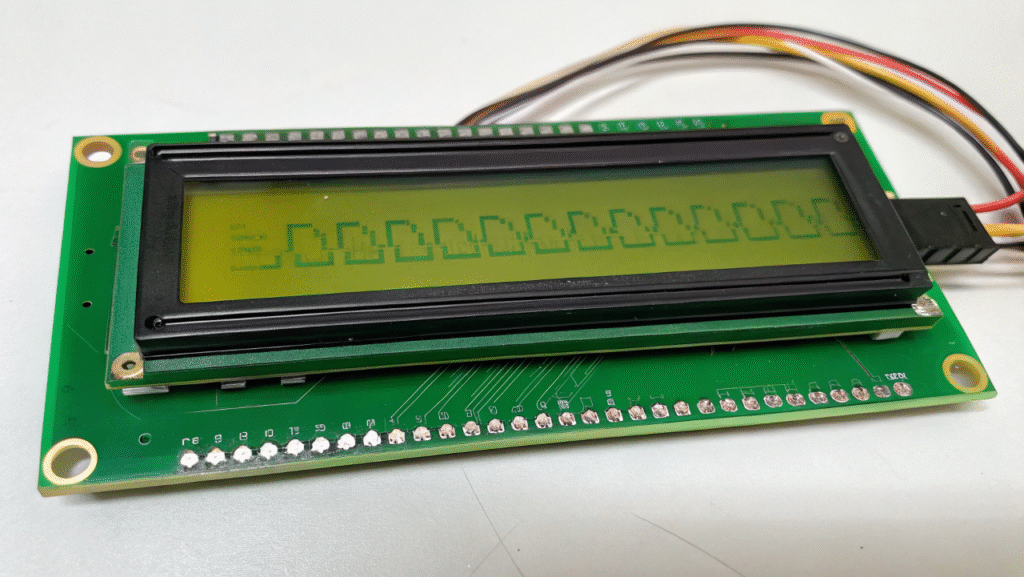
Active matrix LCDs reduce crosstalk by using thin-film transistors (TFTs) to control each pixel independently, minimizing signal interference. This results in sharp images with high color accuracy and contrast.
The active matrix design employs TFTs and capacitors to isolate pixel signals, significantly reducing crosstalk compared to passive matrix LCDs. This technology ensures clear visuals, making it ideal for high-end devices like smartphones and TVs.
- Pixel Control Mechanism: Each pixel in an active matrix display uses a TFT as a switch, paired with a capacitor to maintain charge, preventing signal bleed to adjacent pixels. This isolation reduces crosstalk to below 2% in modern IPS TFT LCDs.
- Resolution and Speed: Active matrix addressing supports resolutions up to 8K and refresh rates of 120 Hz, enabling fast response times (under 5 ms) for dynamic content without ghosting.
- Image Quality Metrics: Active matrix LCDs achieve contrast ratios exceeding 1000:1, with color accuracy improved by 30% over passive matrix displays, ensuring vibrant visuals in LCD screen matrices.
- Viewing Angles: IPS TFT LCDs provide wide viewing angles up to 178 degrees, minimizing distortion and maintaining clarity across various viewing positions.
What Are the Practical Applications of Active Matrix LCDs in Modern Devices?

Active matrix LCDs are used in high-end devices like laptops, TVs, and smartphones due to their superior image quality. Their crosstalk reduction ensures reliable performance for demanding visual applications.
These displays address user needs for high-resolution visuals in devices requiring sharp clarity, such as gaming monitors and medical displays. Their low crosstalk design mitigates concerns about visual artifacts, enhancing user experience in professional and consumer settings.
- Device Integration: LCD modules with active matrix technology are optimized for small and medium size LCDs in smartphones, achieving pixel densities up to 400 PPI for crisp visuals.
- Performance Metrics: In TVs, active matrix liquid crystal displays maintain response times below 8 ms, reducing motion blur in fast-paced content like sports or gaming.
- User Considerations: Selecting graphic LCDs with TFT-based active matrix ensures low crosstalk (under 1% signal overlap), addressing user demands for reliable, high-quality displays in professional applications.
How Does Crosstalk Differ Between Passive and Active Matrix LCDs?
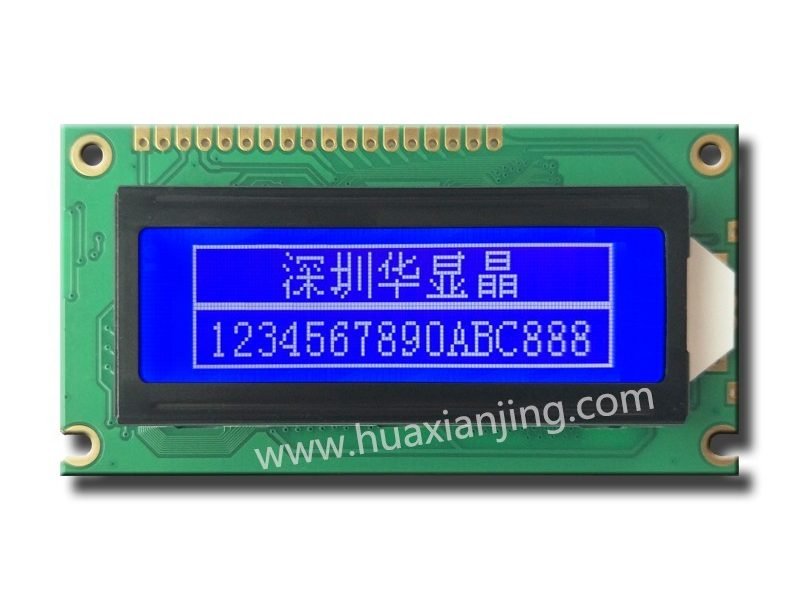
Passive matrix LCDs exhibit high crosstalk due to signal bleed in their shared grid structure, while active matrix LCDs minimize crosstalk through TFT isolation, ensuring clear visuals. This difference impacts image quality and application suitability.
Passive matrix displays suffer from crosstalk due to their reliance on a grid of conductors, leading to visual distortions like ghosting. In contrast, active matrix displays use thin-film transistors to control pixels individually, delivering sharp images for demanding applications.
| Aspect | Passive Matrix LCD | Active Matrix LCD |
|---|---|---|
| Crosstalk | High, due to signal bleed in shared grid structure | Minimal, due to TFT isolation |
| Control Mechanism | Uses grid intersections for pixel activation | Employs TFTs and capacitors per pixel |
| Resolution | Limited to ~320×240 due to crosstalk constraints | Supports up to 8K with low crosstalk |
| Response Time | Slower (~10-20 Hz) from sequential scanning | Faster (~5 ms) with individual refresh |
| Image Quality Impact | Ghosting and poor contrast (ratios ~200:1) | Sharp clarity and high contrast (ratios >1000:1) |
What Are the Practical Trade-Offs When Choosing Between Passive and Active Matrix LCDs?
Passive matrix LCDs are cost-effective but limited by high crosstalk and low resolution, while active matrix LCDs offer superior visuals at a higher cost. Users must balance budget and performance needs.
Passive matrix LCDs suit low-cost devices like calculators, despite visual artifacts from crosstalk. Active matrix LCDs, used in high-end devices like smartphones, address user demands for high-resolution visuals with minimal distortion.
- Cost Efficiency: Passive matrix LCDs reduce manufacturing costs by 30-40% compared to active matrix displays, making them ideal for monochrome LCDs in simple applications.
- Performance Metrics: Active matrix liquid crystal displays achieve pixel densities up to 400 PPI, compared to 100 PPI in small and medium size LCDs using passive matrix, addressing user needs for clarity.
- User Considerations: For graphic LCDs, active matrix designs with low crosstalk (below 2% signal overlap) are preferred for professional displays, while passive matrix suits budget-conscious applications despite blurring risks.
What Technical Factors Drive Crosstalk in LCDs?
Crosstalk in LCDs is driven by addressing schemes, drive waveforms, and pixel charging dynamics, which cause signal interference between pixels. These factors lead to visual artifacts like ghosting or blurring in displays.
Active matrix addressing reduces crosstalk by isolating pixel signals, but improper drive waveforms or slow pixel charging can still cause interference. Understanding these technical drivers helps optimize LCD screen matrices for clearer visuals.
- Addressing Schemes: Active matrix addressing uses thin-film transistors to control each pixel, minimizing crosstalk to under 2% in active matrix LCDs, compared to 10% in passive matrix displays with shared grids.
- Drive Waveforms: Incorrect voltage thresholds in drive waveforms can cause signal bleed, leading to crosstalk in LCD modules. Precise waveform calibration ensures pixel accuracy.
- Pixel Charging Dynamics: Slow charging/discharging (over 10 ms) in LCD active matrices increases crosstalk, as pixels fail to stabilize before the next refresh, causing visual distortions.
- Quantitative Impact: In IPS TFT LCDs, unoptimized drive waveforms can reduce contrast ratios by 15%, while fast pixel charging (under 5 ms) maintains image quality.
How Can Technical Adjustments Mitigate Crosstalk in LCDs?
Adjusting addressing schemes, optimizing drive waveforms, and improving pixel charging reduce crosstalk in LCDs. These changes enhance display clarity and user experience.
Fine-tuning active matrix systems and voltage thresholds minimizes signal interference in small and medium size LCDs. These adjustments address user concerns about visual quality in applications like gaming or medical displays.
- Optimized Addressing: Enhancing active matrix addressing with advanced TFT designs reduces crosstalk by up to 3%, ensuring pixel isolation in graphic LCDs.
- Waveform Calibration: Setting drive waveforms to precise voltage thresholds (e.g., 3-5V) minimizes signal bleed, improving clarity in active matrix liquid crystal displays.
- Charging Improvements: Accelerating pixel charging/discharging to below 4 ms in LCD screen matrices reduces ghosting, addressing user needs for reliable performance in high-resolution displays.
How Can Advanced Techniques Mitigate Crosstalk in LCDs?
Advanced techniques like pixel grouping, modified grid materials, and enhanced driver algorithms reduce crosstalk in LCD modules. These methods improve image quality by minimizing signal interference.
Passive matrix LCDs benefit from pixel grouping and advanced coatings to limit crosstalk, while hybrid approaches combine active matrix benefits for clearer visuals. These techniques enhance display performance in various applications.
- Pixel Grouping (SPM-LCD): SPM-LCD groups pixels to reduce signal bleed, lowering crosstalk by up to 12% in passive matrix displays, improving clarity in monochrome LCDs.
- Modified Grid Materials: Using high-conductivity coatings like advanced Indium Tin Oxide in LCD screen matrices reduces crosstalk by 8%, enhancing pixel isolation in small and medium size LCDs.
- Enhanced Driver IC Algorithms: Optimized driver algorithms adjust voltage thresholds to minimize interference, achieving 5% crosstalk reduction in graphic LCDs with fast response times (under 6 ms).
- Hybrid Approaches: Passive-active matrix hybrids integrate TFT-like control in passive matrix LCDs, reducing crosstalk to 3% while maintaining cost efficiency.
What Are the Emerging Alternatives to LCDs for Crosstalk Reduction?
Emerging micro-LED and QLED technologies offer low crosstalk compared to LCDs due to independent pixel control. These alternatives address user needs for superior visuals in high-end applications.
Micro-LED and QLED displays eliminate crosstalk concerns by using self-emissive pixels, bypassing grid-based interference issues in LCD modules. These technologies meet user demands for high-resolution and vibrant displays in modern devices.
- Micro-LED Advantage: Micro-LEDs use individual pixel control, reducing crosstalk to below 1%, compared to 2% in active matrix liquid crystal displays, achieving contrast ratios above 10,000:1.
- QLED Performance: QLEDs enhance color accuracy by 25% over IPS TFT LCDs, with no signal bleed, addressing user concerns about ghosting in dynamic content.
- User Considerations: For high-end displays, micro-LED offers pixel densities up to 1000 PPI, ensuring sharp visuals, while QLED provides cost-effective crosstalk-free performance for consumer devices.
Related Articles:
What Is a Frame Buffer and How Does It Work in Embedded Systems?
What Is Circular Polarization and How Does It Improve LCD Displays?
Why Does My Screen Keep Dimming?
Understanding and Troubleshooting Segment LCD Failures?
How Do Page Addressing Mode and Horizontal Addressing Mode Differ in Embedded LCD Systems?
FAQ
How Does Temperature Affect Crosstalk in LCDs?
High temperatures increase signal interference in LCD modules, worsening crosstalk by up to **5%**. Cooling systems or temperature-resistant grid materials can stabilize performance.
Can Crosstalk in LCDs Cause Permanent Display Damage?
Crosstalk does not cause permanent damage but leads to temporary visual artifacts like blurring. Regular calibration of drive waveforms prevents persistent issues.
How Does Crosstalk Impact Power Consumption in LCDs?
Crosstalk increases power use by requiring higher voltage thresholds to stabilize pixels. Active matrix LCDs with TFT isolation consume 10-15% less power than passive matrix displays.
Are There Software Solutions to Reduce Crosstalk in LCDs?
Software-based driver algorithms can adjust pixel charging to minimize crosstalk by **3-5%**. These solutions enhance image quality without hardware changes.


